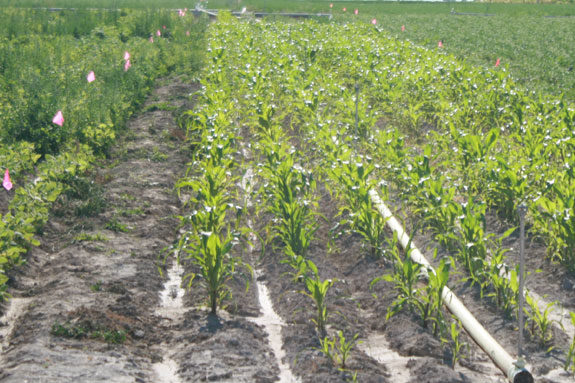The tour is an event that focuses on agricultural research and provides fun for families and the general public.
From 5-8 p.m., visitors walked around to each of the research stations, receiving pamphlets of current information from researchers and their teams.
A majority of the researchers came from research and extension (R&E) centers in South Central Idaho, including Kimberly, Twin Falls, Aberdeen and Caldwell. Others included county extension educators and graduate students.
After stopping at the information center for a map and a free bottle of water, visitors were welcomed by “Potatoland,” where they were able to learn just about everything the consumer needs to know about potatoes– the right storage practices, differences between potato diseases, a variety of potato recipes and the many types of potatoes that Idaho is famous for.
Many also experienced what it would feel like to be a potato, by taking a trip into the center’s storage cooler.
Traveling on down the line of booths, consumers and farmers learned about the importance of seed certification, aquaculture, 4-H shooting sports, the many soils of Idaho, beef quality assurance, weeds and an insect petting zoo, which featured the Colorado potato beetle.

Glenn Shewmaker, extension forage specialist for the Twin Falls R&E Center, demonstrated the importance of forage quality for animals by sampling hay, silage and total mixed rations.
With a corer, Shewmaker’s team demonstrated how to take a core sample of a bale of hay, as well as the moisture content and temperature of the bale.
Farther down the booth trail, Mireille Chahine, extension dairy specialist for the Twin Falls R&E Center, explained the way milk was made– from the food the cow eats to the udder where the milk comes out.
On the table was a preserved cow stomach containing all four compartments, and an udder with each of the four quarters dyed to show their separations.

Chahine used the udder to explain how mastitis stays in only the infected quarter without spreading to the whole udder.
The area at the end of the line of booths contained tables for eating a free meal, consisting of salad, chips, hamburgers and hotdogs.
There were free horse-drawn wagon rides that transported visitors to and from the nearby research fields, where they listened to guides explain the trials being conducted in each plot.
Families, researchers and others enjoyed the educational, laid-back atmosphere of the evening and took home information on the many aspects and values of agriculture. FG
PHOTOS
TOP: Twilight Tour participants viewed this corn research plot – just one of many of the research plots surrounding the Kimberly Research and Extension Center.
MIDDLE: Glenn Shewmaker, extension forage specialist for the Twin Falls R&E Center, demonstrated how to read the moisture content of a hay bale.
BOTTOM: Mireille Chahine, Twin Falls R&E Center extension dairy specialist, explained the digestion of food content for cows with this preserved stomach. Photos by Kelsey Holter.











